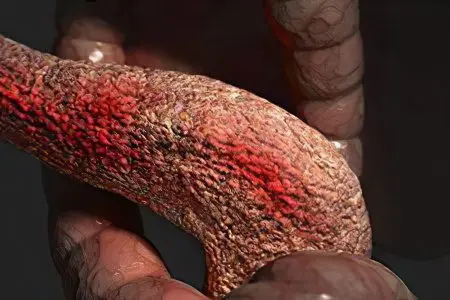Contents
What is pancreatitis?
Pancreatitis is inflammation of the pancreas. The cause of pancreatitis is the blockage of the duct of the gland by stones from the gallbladder, a tumor or a cyst. In such a situation, the outflow of digestive juices with enzymes into the small intestine fails. These pancreatic enzymes accumulate over time and begin to affect the tissues of the gland itself. And as a result, it turns out that the pancreas digests itself.
Such enzymes can destroy not only all gland tissues, but also nearby blood vessels and other organs. The result can be death.
Causes of pancreatitis

The gland is influenced by both the diet of a person and his lifestyle in general. In order for carbohydrates, fats and proteins to be absorbed by the body, certain enzymes must be present in it, for example, lipase for the ability to absorb fats, trypsin for the absorption of proteins. When a person introduces into his diet products in which harmful substances predominate, or when he abuses alcohol, or when he is undergoing therapy with certain drugs, the work of the pancreas is disrupted. Such a slowdown leads to the fact that stagnation of juice occurs in the organ and in its ducts. The process of digestion of food fails, as a result, a person begins to suffer from inflammation of the gland – acute pancreatitis. Poisoning, overeating, trauma can provoke it.
Inflammation of the pancreas alone is an extremely rare phenomenon, almost always other digestive organs are involved in this pathological process. The complexity of diagnosing her condition lies in the fact that it is located deep in the body and has a small size.
Scientists have identified a number of factors leading to the development of pancreatitis:
Diseases of the gallbladder and biliary tract. This is the most common cause of inflammation. The fact is that with the formed obstruction of the biliary tract and with the reflux of bile, the pancreas gives a pathological chemical reaction. It accumulates substances that stimulate the work of produced enzymes against the tissues of the organ itself. There is a gradual destruction of blood vessels, gland tissues swell strongly, hemorrhages appear in it. According to available data, pancreatitis due to disruption of the gallbladder and its pathways develops in 70% of cases (if we exclude the alcoholic nature of the disease). The rest of the causes of inflammation of the gland, scientists refer to idiopathic, that is, those that cannot be established.
Diseases of the duodenum and stomach. The release of intestinal contents into the ducts of the gland can occur with insufficiency of the sphincter of Oddi. This occurs in diseases such as gastritis and ulcers, a decrease in the motor activity of the duodenum or its inflammation.
Intoxication of various etiologies. Poisoning from alcohol, chemicals, food, and even infection with worms can all lead to the formation of pancreatitis. In addition, the regular consumption of fruits and vegetables with pesticides, the inclusion in the menu of foods rich in chemical additives, is harmful.
Increased blood pressure, vascular atherosclerosis, childbearing period, diabetes mellitus. Any disease that leads to impaired blood circulation causes it to fail in the pancreas. As a result, there is a violation of its nutrition and the formation of inflammation. During the bearing of a child, a lack of blood circulation occurs due to the pressure of the uterus on the vessels of the organs, contributing to the development of its ischemia. Therefore, all pregnant women are at increased risk for the development of pancreatitis.
Binge eating. If the balance of fat metabolism is disturbed in the body, iron begins to produce enzymes in greater quantities. If disorders of fat metabolism become chronic, then the risk of developing inflammation of the organ increases significantly. It is especially dangerous to include fried and fatty foods in the menu.
Undergoing therapy and taking certain medications for this reason. The following drugs can negatively affect the work of the pancreas: Metronidazole, Furosemide, Azathioprine, Tetracycline, Estrogens, Glucocorticosteroids, Cholinesterase inhibitors, Thiazide diuretics, Sulfonamides and NSAIDs.
Organ injury. Operations on the duodenum and gallbladder, blunt abdominal trauma, and wounds can lead to inflammation.
Allergy. Some types of pancreatitis can be triggered by allergic reactions of the body. It begins to produce antibodies that are prone to auto-aggression. Similar processes occur with pancreatitis, when the gland destroys itself on its own. (Read also: Causes, symptoms and treatment of allergies)
Infections. Chicken pox, chronic tonsillitis, liver failure, hepatitis, mumps, inflammation of a purulent nature, with localization in the peritoneal cavity and outside it, dysentery and intestinal sepsis – all these infections can provoke inflammation of the pancreas.
Genetic predisposition. Genetic disorders that provoke the development of the disease in early childhood are possible.
Statistics of pancreatitis by causes of occurrence
40% of all patients with inflammation of the pancreas are alcoholics. They most often reveal either organ necrosis or its destructive disorders.
30% of patients are patients with a history of cholelithiasis.
20% of patients are obese patients. (See also: obesity: degrees of obesity and its causes)
5% of patients are patients who have suffered an organ injury or intoxication of the body, taking medications.
Less than 5% of patients are patients with a hereditary predisposition to the formation of inflammation, or suffering from congenital defects in the development of the organ.
How does pancreatitis manifest itself?

Inflammation of the organ is accompanied by symptoms that echo signs of serious poisoning. Enzymes, with pancreatitis, remain in the pancreatic ducts or in the organ itself and destroy it from the inside. In addition, they are absorbed into the blood, which leads to the development of intoxication of the body.
So how does pancreatitis manifest itself? The following signs can be distinguished:
Severe pain always accompanies inflammation of the gland. They torment the patient on an ongoing basis, their character is cutting or dull. The pain can be so severe that it can provoke pain shock. The place of their localization is the right hypochondrium or the left hypochondrium, or an area located slightly below the median edge of the sternum. The exact location of the pain depends on which part of the organ is inflamed. If the entire gland is inflamed, then the pains are girdle in nature.
An increase in body temperature, a drop or increase in pressure. The more intense the inflammation, the worse the patient will feel. Body temperature rises to high values, jumps in blood pressure are possible.
Change in skin color on the face. First, the patient’s facial features are sharpened. Secondly, the skin turns pale, and then completely becomes earthy gray.
The occurrence of vomiting. After the vomit comes out, the patient does not feel a sense of relief. The masses themselves contain undigested food, and subsequently bile masses. In this regard, fasting is an important point in the treatment of inflammation, which lays the foundation for further successful recovery.
Nausea and hiccups. In addition, belching and dry mouth may occur.
The formation of constipation or the development of diarrhea. Most often, the acute phase is accompanied by the appearance of a frothy, fetid stool, in which food particles are present. Constipation is often the first sign of the development of inflammation, in parallel, the patient experiences hardening of the abdominal muscles and bloating.
The appearance of shortness of breath. This symptom is formed due to the loss of electrolytes during vomiting. A person has sticky sweat, a large amount of yellow plaque forms on the tongue.
Bloating. Stopping the work of the intestines and stomach leads to bloating, which is diagnosed by the doctor when performing palpation.
The appearance of bluish spots. They occur mainly on the lower back and near the navel. At the same time, the skin seems to be marbled, and in the groin area it can turn blue-green. The reason for this condition is the penetration of blood from the inflamed organ under the skin.
Yellowing of the skin and sclera of the eyes. If sclerosing pancreatitis occurs, then the patient develops obstructive jaundice. It is formed against the background of clamping of the bile duct by an inflamed organ.
If the patient has signs of acute pancreatitis, his condition will deteriorate rapidly. That is why it is so important to seek medical help immediately.
The same signs that manifest themselves in both acute and chronic (during exacerbations) forms of pancreatitis are acute, severe pain in the abdomen. Localization depends on which part of the pancreas is covered by the inflammatory process.
The main components of the pancreas are: head, body and tail. If the process began in the head of the gland, then acute pain occurs in the right hypochondrium, if the body is affected, then pain is noted in the epigastric region, and pain in the left hypochondrium indicates the development of inflammation in the tail. If the process covers the entire gland, then the pain syndrome is girdle in nature, it can radiate to the back, behind the sternum, to the shoulder blade.
Pain syndrome in acute inflammation of the pancreas is considered one of the most severe. Acute, sharp pain that occurs in the abdomen or in the hypochondrium tends to spread to the back, to the area of the shoulder blades and behind the sternum.
In the acute form, as a rule, stool disorders from diarrhea to constipation are noted. Most often, patients note a mushy stool with impurities of undigested food, which has an unpleasant odor.
How does chronic pancreatitis manifest itself?

Chronic pancreatitis is accompanied not only by inflammation of the organ, but also by structural changes in its tissue. Experts argue that the most significant difference between the chronic form of the disease and the acute one is the progression of pathological changes in the organ even after the provocative factor has been eliminated. As a result, the patient experiences exogenous and endogenous gland failure.
The initial period of chronic inflammation of the organ lasts, as a rule, up to several years. At the same time, the symptoms of the disease appear and disappear. The second period starts from the moment when the symptoms of the disease begin to haunt the person constantly.
For several decades, the patient may complain only of periodic pains that bother him after a quarter of an hour from eating. The pain can last from an hour to several days. The place of their localization is the upper abdomen, sometimes pains are felt in the heart, or in the left side of the sternum or lower back. In some cases, the pain is excruciating in nature. You can reduce their intensity if you lean forward or sit down.
Pain often does not occur spontaneously, but is the result of eating fatty, fried foods or alcohol. Chocolate or coffee can provoke an attack. If you eat several potentially dangerous foods at the same time, the pain can become unbearable. This is due to the fact that iron is not able to cope with various types of carbohydrates, fats and proteins at once. Therefore, those people who eat separately are less likely to suffer from pancreatitis.
An attack of pain may be accompanied by diarrhea, nausea, vomiting, flatulence, a person may begin to lose weight. However, these symptoms do not always bother the patient, and even if you receive symptomatic therapy, you can quickly get rid of dyspeptic disorders and continue to lead a normal life, but until the next attack.
When pancreatitis becomes chronic and a person does not receive proper treatment, the structures of the organ are destroyed. There are signs of enzymatic and hormonal deficiency. Moreover, such people may not suffer from pain at all. The symptomatology of dyspeptic disorders prevails more often.
The skin of the patient acquire unexpressed jaundice. The same applies to the sclera. Yellowing of the skin periodically passes.
When the organ atrophies completely, a person develops diabetes mellitus. (Read also: Causes, signs and symptoms of diabetes)
The following types of chronic inflammation of the pancreas are based on the symptoms from which the patient suffers:
Asymptomatic inflammation – for years the patient does not even suspect that he has a problem;
Dyspeptic inflammation – the patient comes to the fore diarrhea, flatulence, weight loss;
Pain inflammation – the patient suffers from severe pain that occurs after eating and drinking alcohol;
Pseudotumor inflammation – the symptoms are similar to those of pancreatic cancer, while the patient’s skin and sclera turn yellow.
[Video] Dr. Hu – Why Medicines Don’t Work? What to do to relieve pain?









